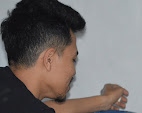When looking at the beginnings of photography, diffierent arguments can be made as to who invented the first camera or who shot the first photograph. Sufficient evidence can be presented however, in favor of the pioneering inventors who first made photography available to the greater public. If ever there was a Father of Photography, Louis Daguerre would have a rightful claim to that title.
Louis Daguerre was an accomplished artist, working in the fields of architecture, theater and painting. Before his foray into photography, Daguerre was more well known for the diorama which he helped invent. It was only in 1829 that the inventor partnered with Nicéphore Niépce, another inventor who pioneered some of the earliest photographic processes, specifically the heliograph.
The heliographic process was able to record scenic impressions using plates coated with bitumen. Unfortunately, the exposure time lasted several hours or even days, something which Daguerre tried to improve on. After Niépce passed away in 1833, Daguerre shifted his attention to silver salts, compounds that were used by the chemist Johann Heinrich Schulze. Using light-sensitive silver iodide liquid to coat a glass plate, Daguerre could record images similar to the heliograph.
Just like the heliograph however, exposure times could take several hours. Through a serendipitous discovery, Daguerre found out that mercury vapor could record a fleeting image on the plate. The inventor then "fixed" the image with warm salt water. This process of exposing, developing and fixing an image became the de facto method of commercial photography from the earliest daguerreotypes to modern photographic film (dropped only quite recently in favor of digital methods).
While the daguerreotype cut down exposure times significantly, the earliest tools and chemicals used still required several minutes for one exposure. For example, in the daguerreotype above of the Boulevard du Temple in Paris, the streets and sidewalks are bare save for two people on the lower left-hand corner: a gentleman and a shoe shiner, both of whom stood in the same position long enough to be recorded on the 10-minute long exposure. This image is also being touted as the earliest photograph with a recognizable human being in it.
Daguerre initially tried to attract private investors in his invention, but his efforts failed. The inventor went public in 1839, presenting his process to the Académie des sciences. The presentation was a success, and some academy members subsequently helped Daguerre secure a lifetime pension for himself and Niépce's nephew through the French government. The daguerreotype process was then presented as a gift from France to the world for free, with the details and instructions published without fee.
Daguerre's biggest competitor during this period of discovery was Henry Fox Talbot who invented the calotype. The calotype was different in that in involved a light-sensitive paper treated with silver chloride. Exposure time with calotypes were also relatively short because only a faint image was required at first; the full image could be developed later with special chemicals on the paper "negative". Because the paper could hold the image and transfer it to a "positive image" print, multiple copies of an image could be made from only one exposure. This potentially made it easier to market than the daguerreotype, which only produced one copy per exposure.
Talbot, hoping to make a profit from his invention, licensed the calotype to interested parties. Unfortunately, this strategy backfired as the daguerreotype was free to produce; those who wanted to make a calotype had to pay Talbot a royalty fee. This inevitably led to the daguerreotype being the first popular photographic process in the world.
The daguerreotype gradually declined in popularity around the 1860s in favor of simpler and less cumbersome photography methods such as the tintype and the ambrotype. Some modern artists such as Chuck Close and Jerry Spagnoli have pioneered a revival of the old process, and many daguerreotype enthusiasts can now be found all over the world.
The Wikipedia pages on Louis Daguerre and daguerreotype have more information on the Father of Photography and the pioneering photography process. For a modern take on the daguerreotype, check out artist Chuck Close's work. Some books on the subject include Chuck Close: A Couple of Ways of Doing Something, Camera: A History of Photography from Daguerreotype to Digital and Young America: The Daguerreotypes Of Southworth & Hawes.














No comments:
Post a Comment